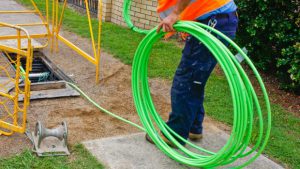NBN and Government
A summary
I may be out of place talking about the NBN and Government although someone needs to set the record straight.
In a report January 18 in The Sydney Morning Herald it was reported that Australia has a slower broadband speed than Kazakhstan.
This plus a host of other nations. Countries including Austria, Slovenia, the Czech Republic and Russia.
In fact, we rate well behind a majority of countries in the world in this test.
As Donald Trump would declare, this is fake news! It is twisted to distort the facts with the headline designed to throw doubt on the abilities of our NBN and Government.
Why would I make a statement so bold as to challenge a leading newspaper report.
Because my friends the headline is a sensation but reading the full transcript details something very different.
Australia is less than half-way through its rollout of high-speed broadband fixed network and add to this 80% of those on the network have chosen a slower speed than possible.
Is it cost?
This may be a cost factor which we can blame all the supply tiers for. Or is it simply that a basic 25 Mbps is enough for most people and that more is wasted.
The measurement they went by was the average download speed across the country.
Since the beginning of 2017, the average speed in Australia has increased by 25 percent. Reference telecommunications comparison site. WhistleOut spokesman Joseph Hanlon said.
They also stated that we are targeting a world average of 40Mbps by year end 2018.
A reasonable achievement in most eyes.
When we are still heavily invested in ADSL services across Australia and most choose a speed between 12 and 25 Mbps on NBN. How will they increase the average?
NBN and the carriers are opting for new pricing packages. This isn the hope to move users up to a 50Mbps speed that is available to most users.
Where will we be happy?
I must admit that I am happy with 25mbps but if 50 was appropriately priced I would be tempted to move up.
As more business come under the fold they will help increase the average as well.
It really is a cost/need model that is skewed more to cost than need.
It would have been interesting if the original Fibre to the premises model had been rolled out with much higher speeds available. What would have been the uptake?
The current Government opted for a hybrid model for both speed and setup cost.
This was to get Australia moving to a position where we had some choice.
This watered down network does not look like returning a profit any-time soon.
Imagine the cost basis of the original infrastructure.
Yes, there are lots of problems with the NBN we know that.
Most issues I see are not being able to get on the network and still having to work with about 5Mbps ADSL.
Gee, I still remember those days as I happily accept my NBN fate and regularly run at around + 20Mbps in a home office.
And my point being?
My point here is that we could all run at speeds of 50+ Mbps if we so choose to and if the NBN network was available so it is only time.
A couple more years and we shall all be hankering for higher speeds and as Borak would have said eat our dust Kazakhstan.
Peter Hanley has worked in the Telco area for many years. He currently markets NBN services through and Australian carrier Vonex. 1800116116


